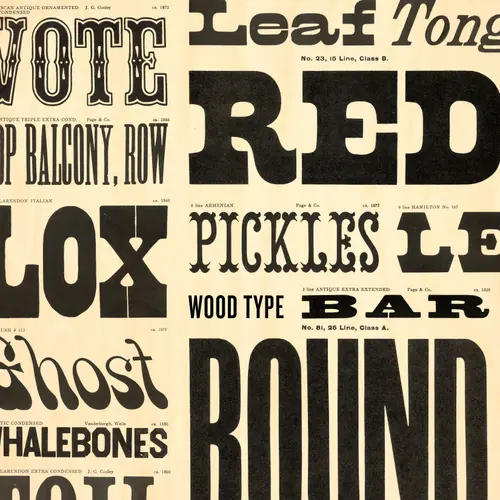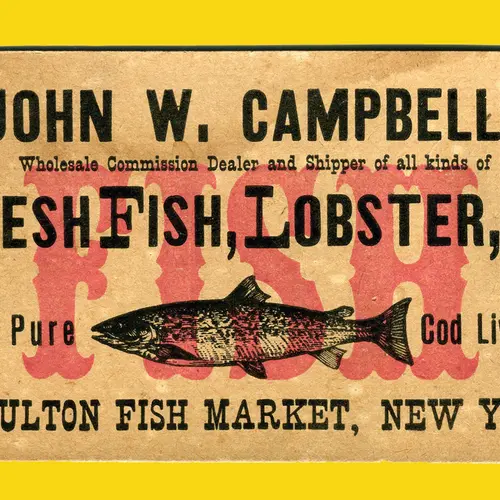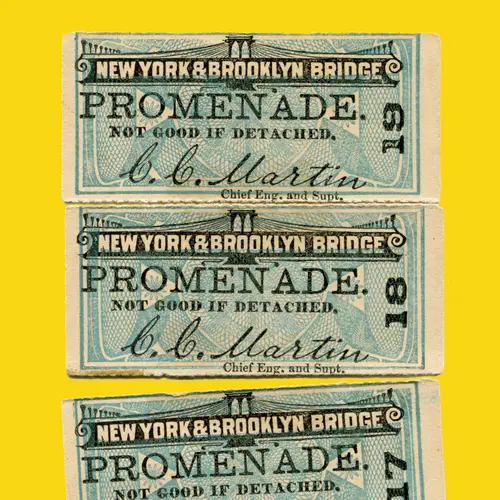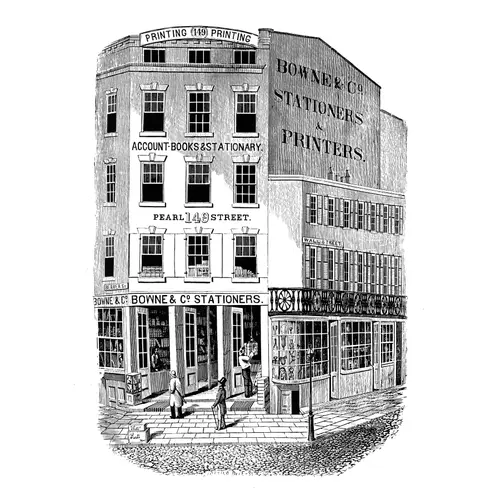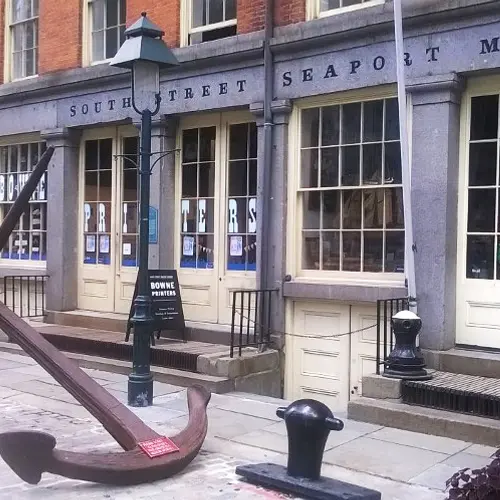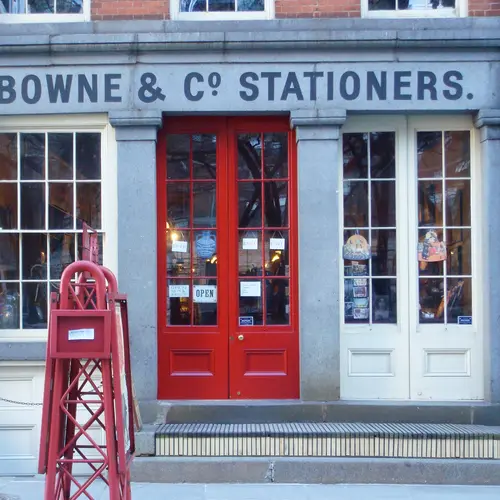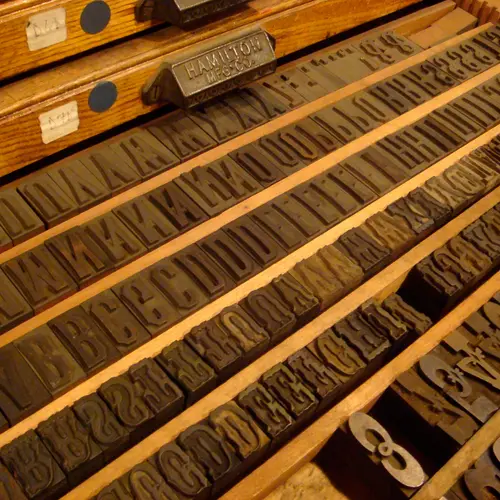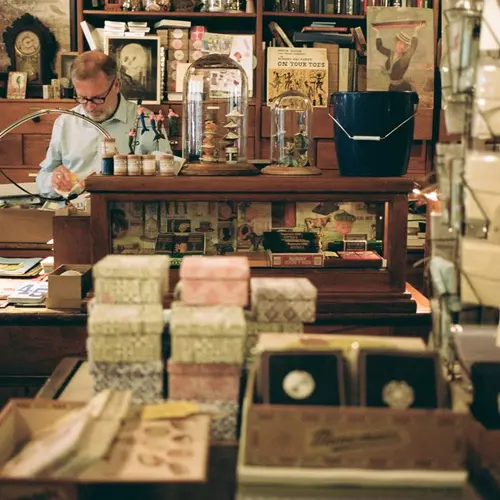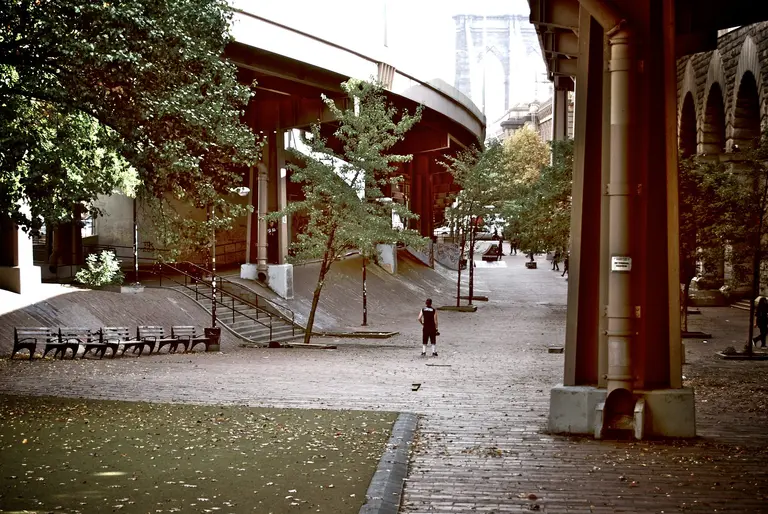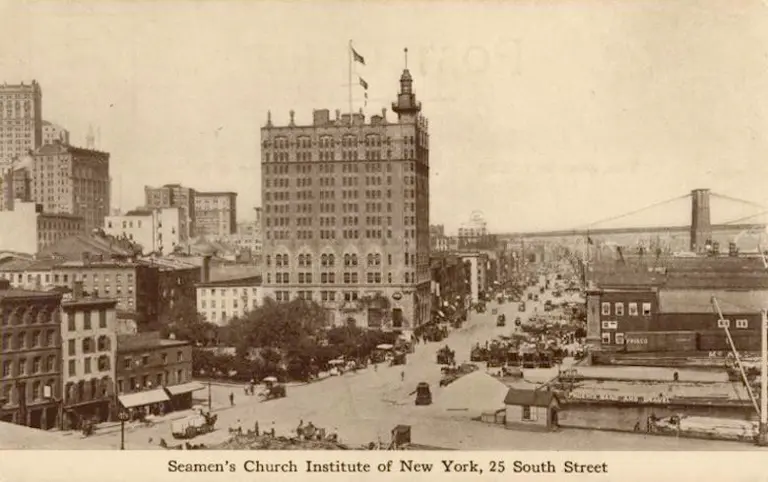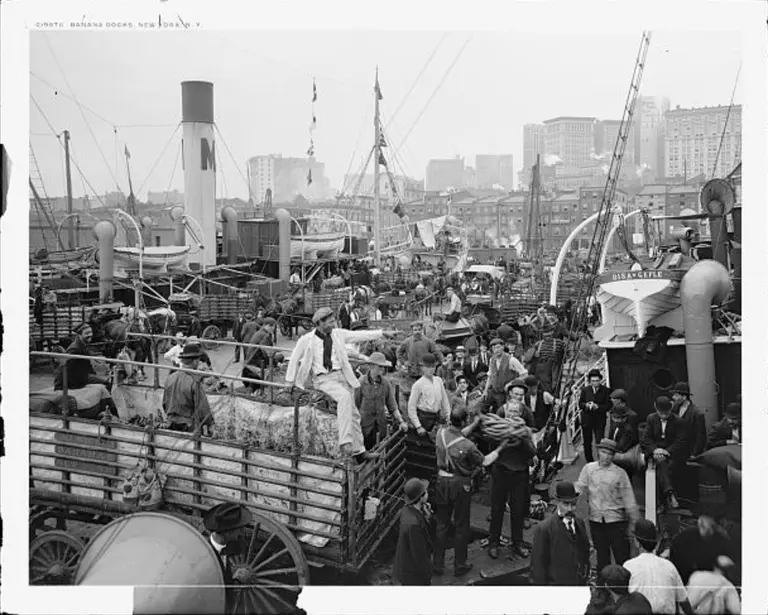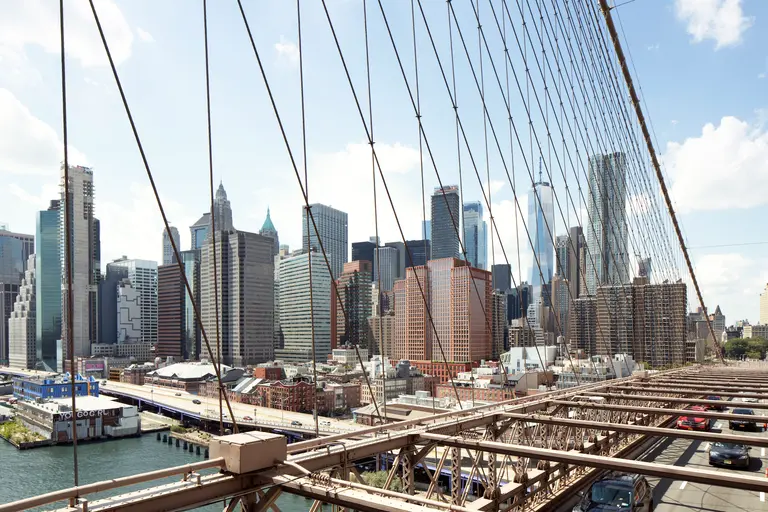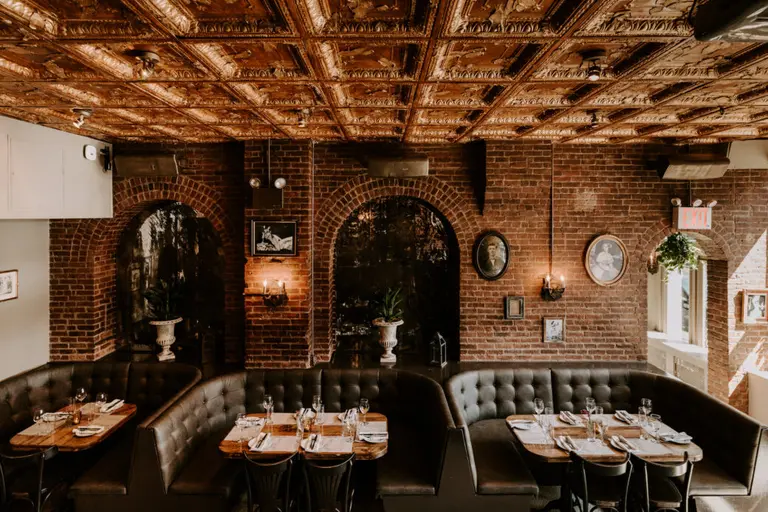Ink and water: How the printing industry helped build the Port of New York
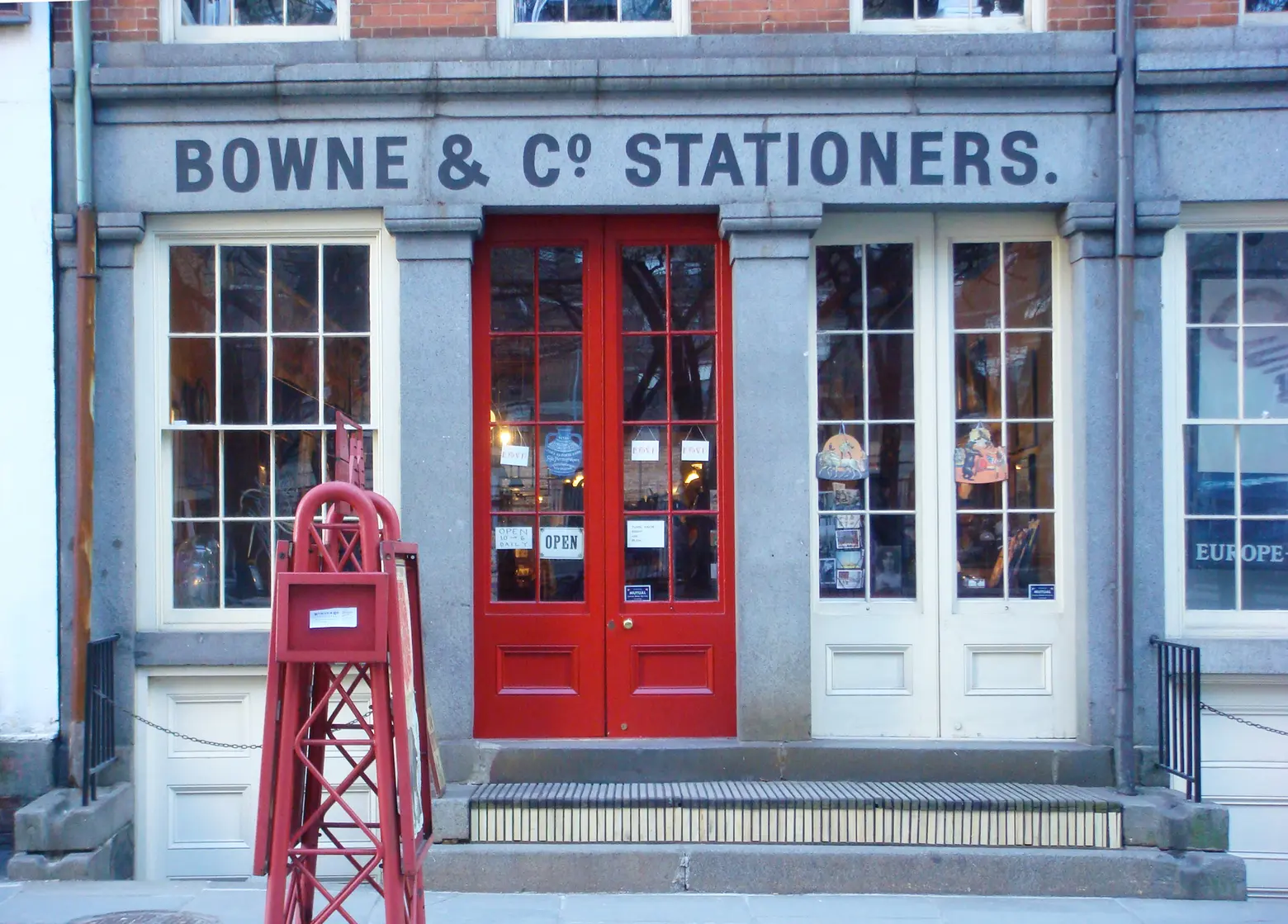
Bowne & Co. Stationers today, via Flickr cc
Bowne & Co. Stationers, which the South Street Seaport Museum bills as the city’s “oldest operating business under the same name,” has been a presence in Lower Manhattan since 1775. That year, Robert Bowne opened a dry goods and stationery store at 39 Queen Street. Following the American Revolution, Bowne & Co. grew along with the Port of New York, providing the advertising, stationary, and financial printing that made it possible for life and commerce at the port to function and thrive. Because New York’s printers were responsible for printing everything from stock certificates to tugboat notices, steamship broadsides to cargo invoices, fishmongers’ business cards to bankers’ prospectuses, the industry helped the city emerge as the world’s busiest port, and its preeminent financial center.
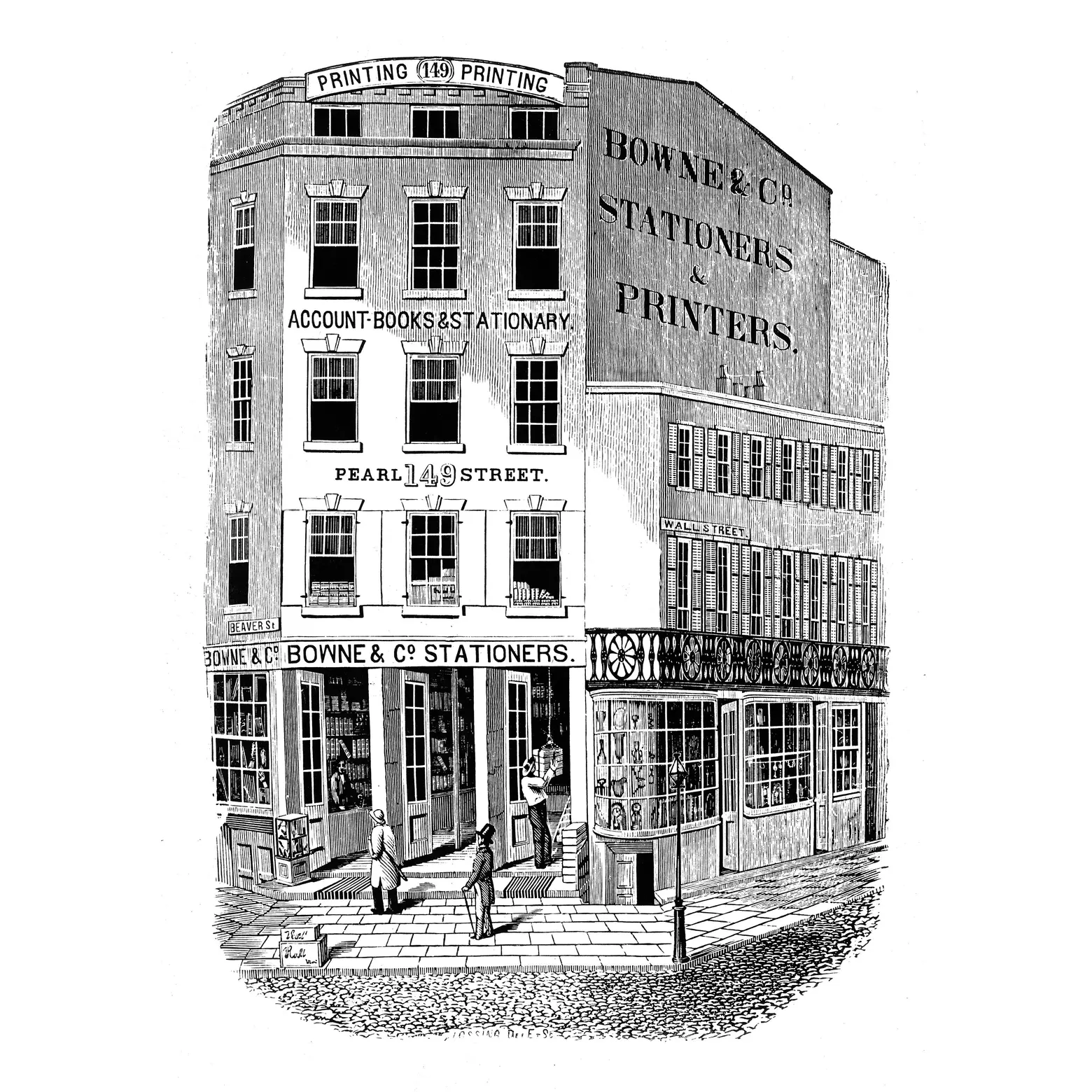
Unknown Artist [Woodcut proof of Bowne & Co. Stationers, 149 Pearl Street] ca. 1950 Paper, ink 5 ¾ x 3 ¾ in. Edmund A. Stanley, Jr. collection relating to Bowne & Co., Manuscripts and Archives Division Courtesy of The New York Public Library. Bowne & Co. Moved to 149 Pearl St. after the fire of 1835.
In the 19th Century, South Street was known as the “Street of Ships.” Vessels from around the world jammed the Port of New York, and the pace of business moved at the speed of a clipper ship. Amongst the ships, slips, and sails of the Seaport, printing offices proliferated. As goods and people moved through the port trading, traveling, settling and selling, printers were necessary to print advertisements, record sales, create schedules, or ink postcards. Printed materials like a hotel’s calling card, a rope maker’s invoice, a steamship’s timetable, a passenger’s ticket, or a merchant’s deposit slip were all part of the history of the port, and both reflected and drove its growth. In fact, the industry grew so steadily with the port it served, that by the end of the 19th century, New York was home to over 700 printing offices.
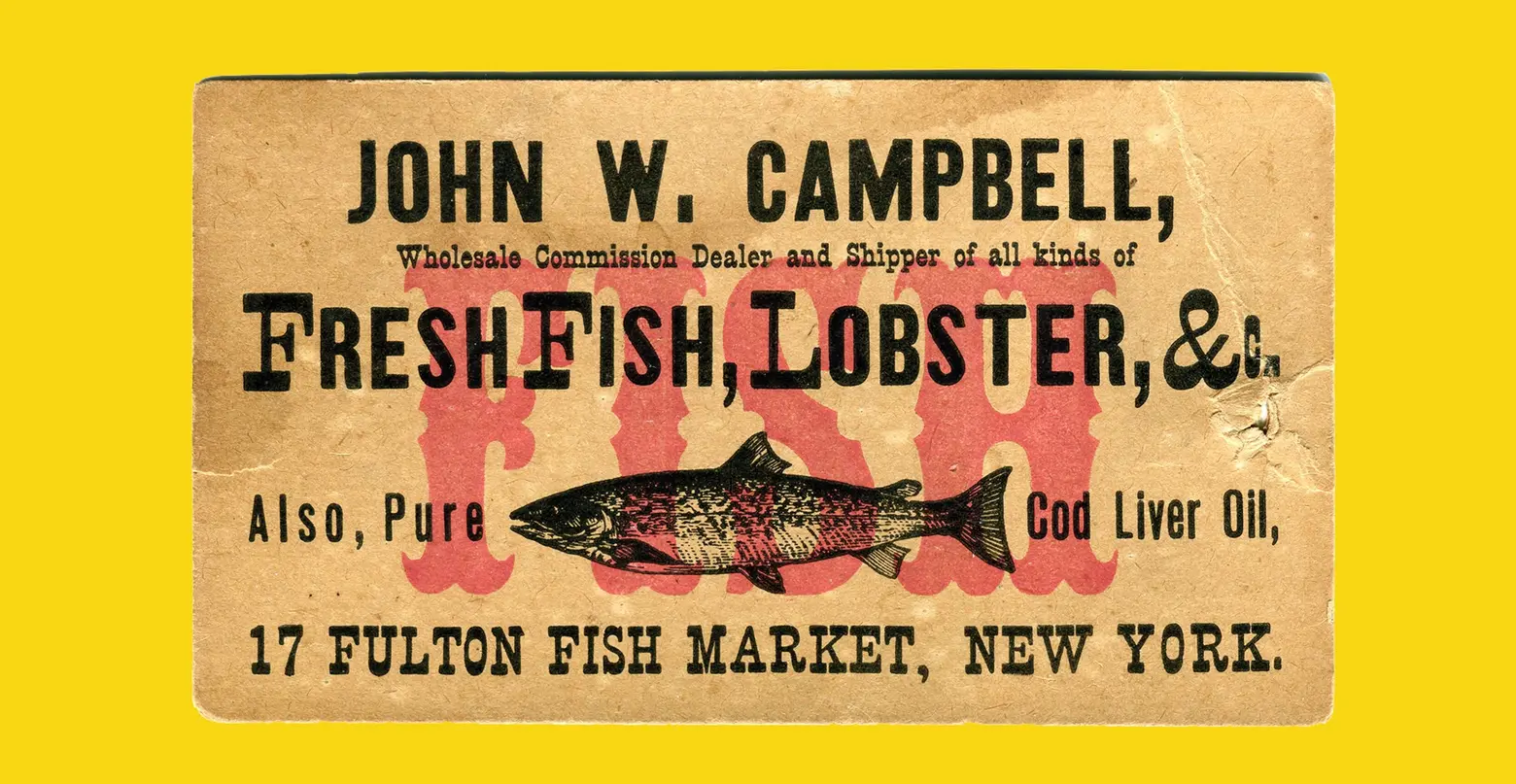 Unknown Artist, John W. Campbell Fish Dealer Trade Card, late 19th century Paper, ink 2 1/2 x 5 7/16 in. Trade Card Collection South Street Seaport Museum 1985.102.0002
Unknown Artist, John W. Campbell Fish Dealer Trade Card, late 19th century Paper, ink 2 1/2 x 5 7/16 in. Trade Card Collection South Street Seaport Museum 1985.102.0002
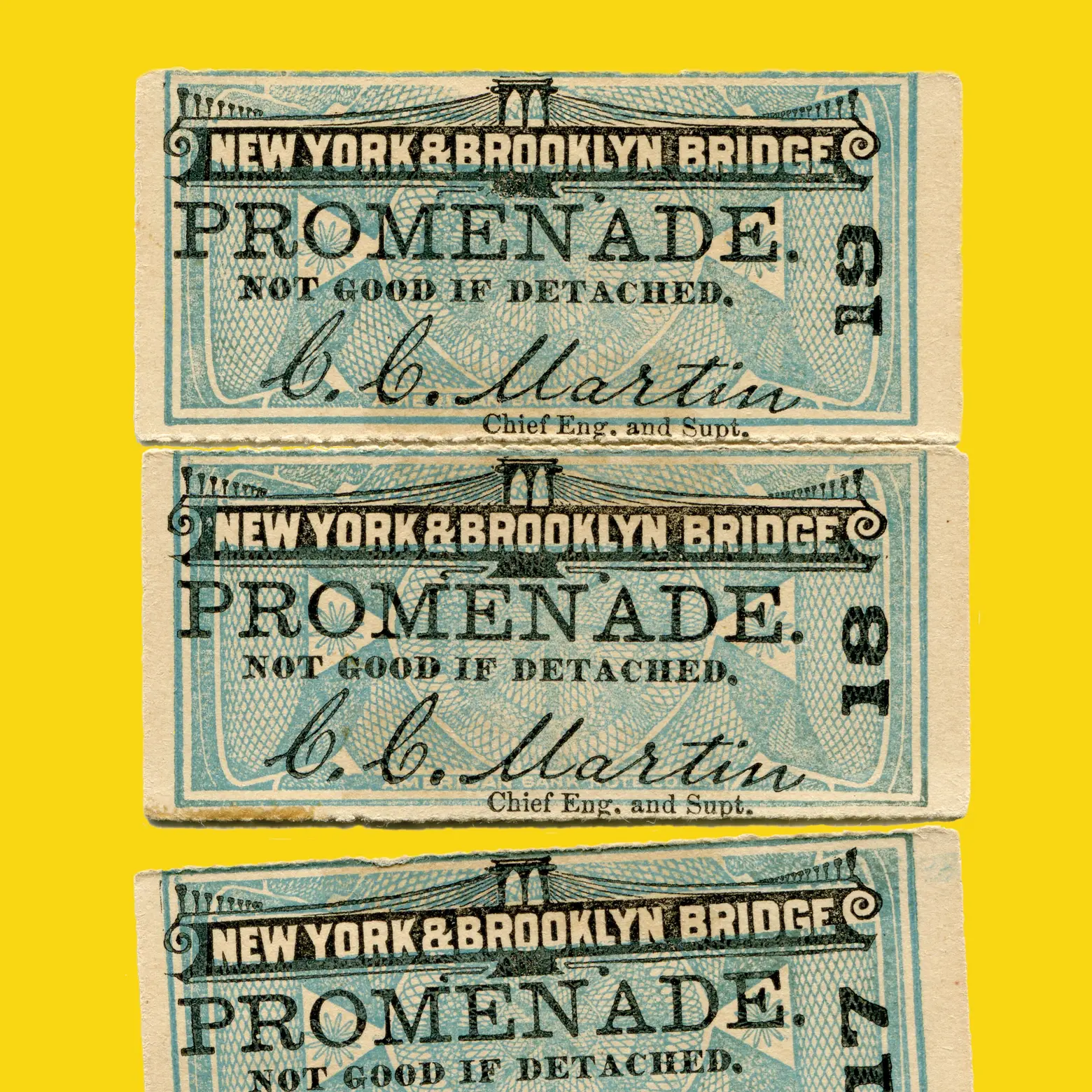
Unknown Artist [New York & Brooklyn Bridge Promenade Tickets], ca. 1883 Paper, ink 5 1/2 x 2 1/16 in. Gift of Peter Neill South Street Seaport Museum 1997.027.0006A-F.
Since the Port was the city’s economic engine, the area’s businesses drove the consolidation of financial institutions such as the New York Stock Exchange and the Bank of New York. Accordingly, printers were instrumental in the growth of the city’s nascent banking industry. According to the South Street Seaport Museum, Bowne & Co. specialized in documents for the financial industry including “promissory notes, prospectuses, annual reports, and stock certificates.” The specialty makes perfect sense, since Robert Browne himself helped found the Bank of New York, and Bowne and Co. was one of the oldest companies listed on the New York Stock Exchange.
If there is an inextricable link between art and commerce, then the printers at the port might be one of the best places to explore it: they made commerce possible by printing the materials it depended on, and they influenced the visual and material culture of the city.

Selection of specimens of wood types from the printing collection of the South Street Seaport Museum.
A revolution in printing began at the Seaport in 1827 when Darius Wells, who worked in the area, created the first commercially available wooden type. Wooden type was such a game-changer for 19th-century printers, because they could carve letters, designs, and symbols in a variety of sizes and styles, and set them in a myriad of creative and eye-catching ways.
Many of these types, both in wood and lead, telegraphed the opulence of the Gilded Age. According to the South Street Seaport Museum, printers used “ornamented type” that matched the opulence of the period’s architecture or fashion. At the port, though, what counted most was that signage be eye-catching and stand out in an immensely crowded and frenetic environment.
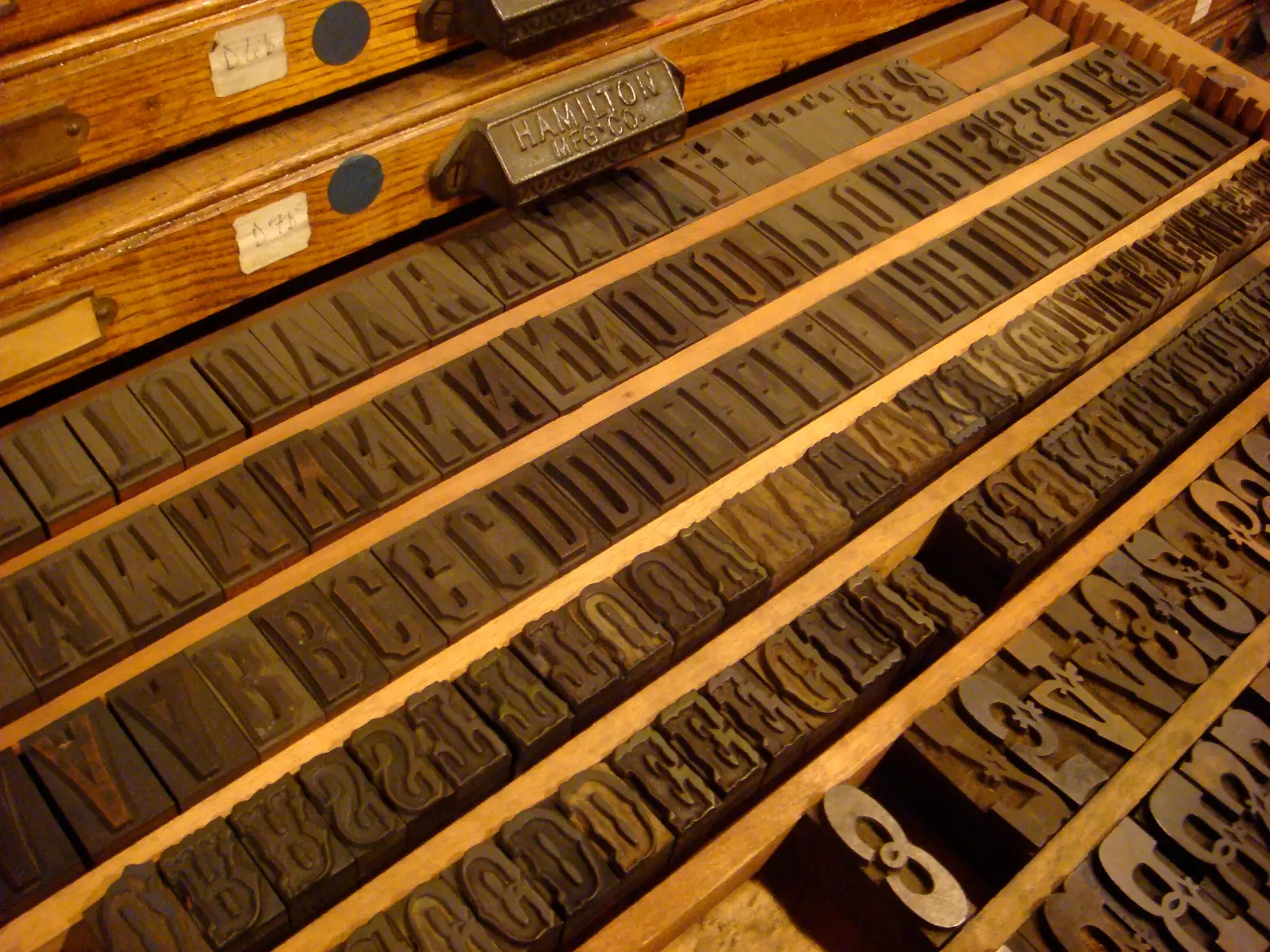 Some of the type styles on view today at Bowne & CO., via Flickr cc
Some of the type styles on view today at Bowne & CO., via Flickr cc
Today, the museum collection at Bowne and Co. holds over 150 type styles from around the country and 34 vintage presses. As you run your fingers over the smooth wooden type or try operating one of the machines, you’re pressing into New York’s history.
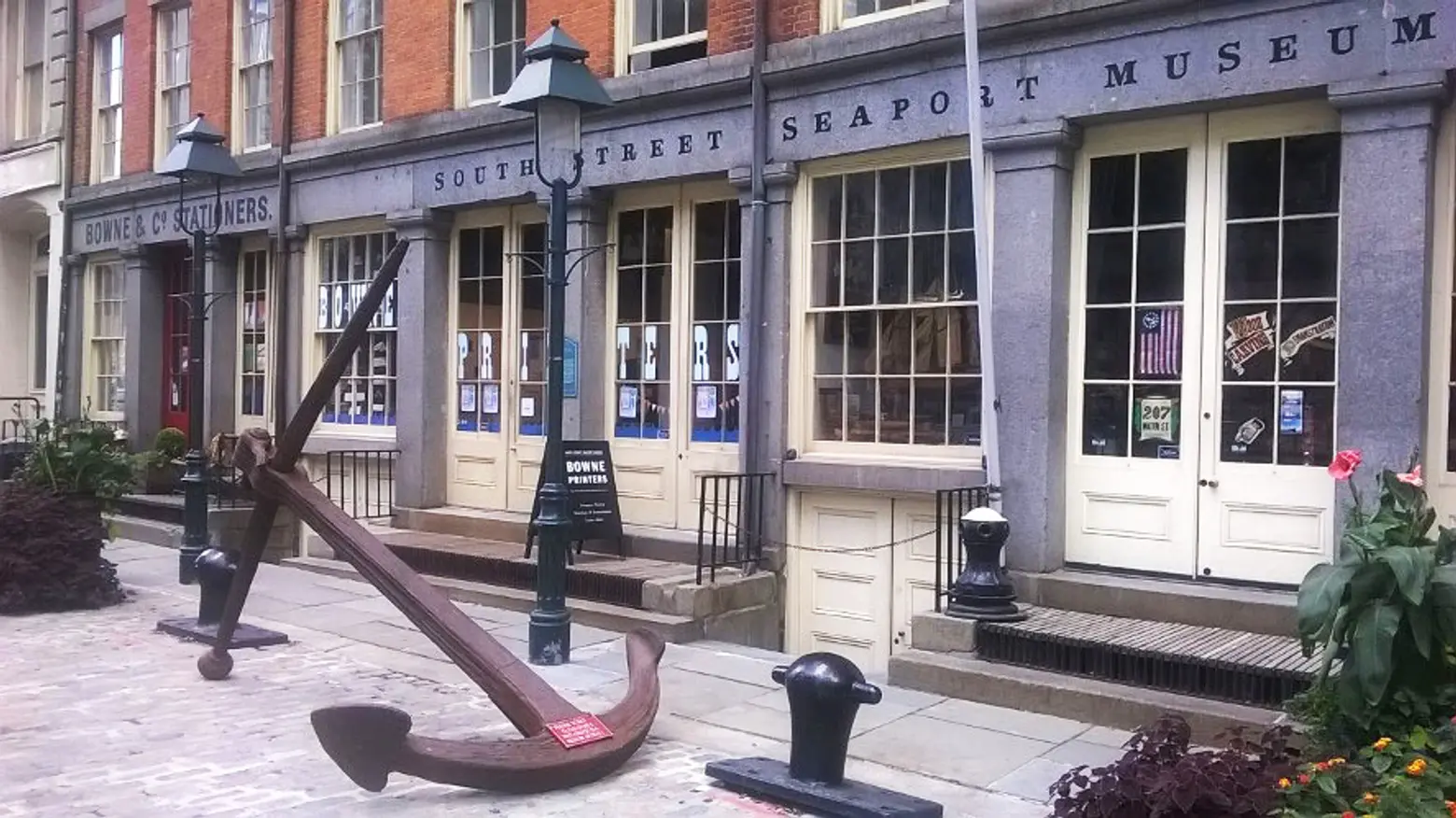
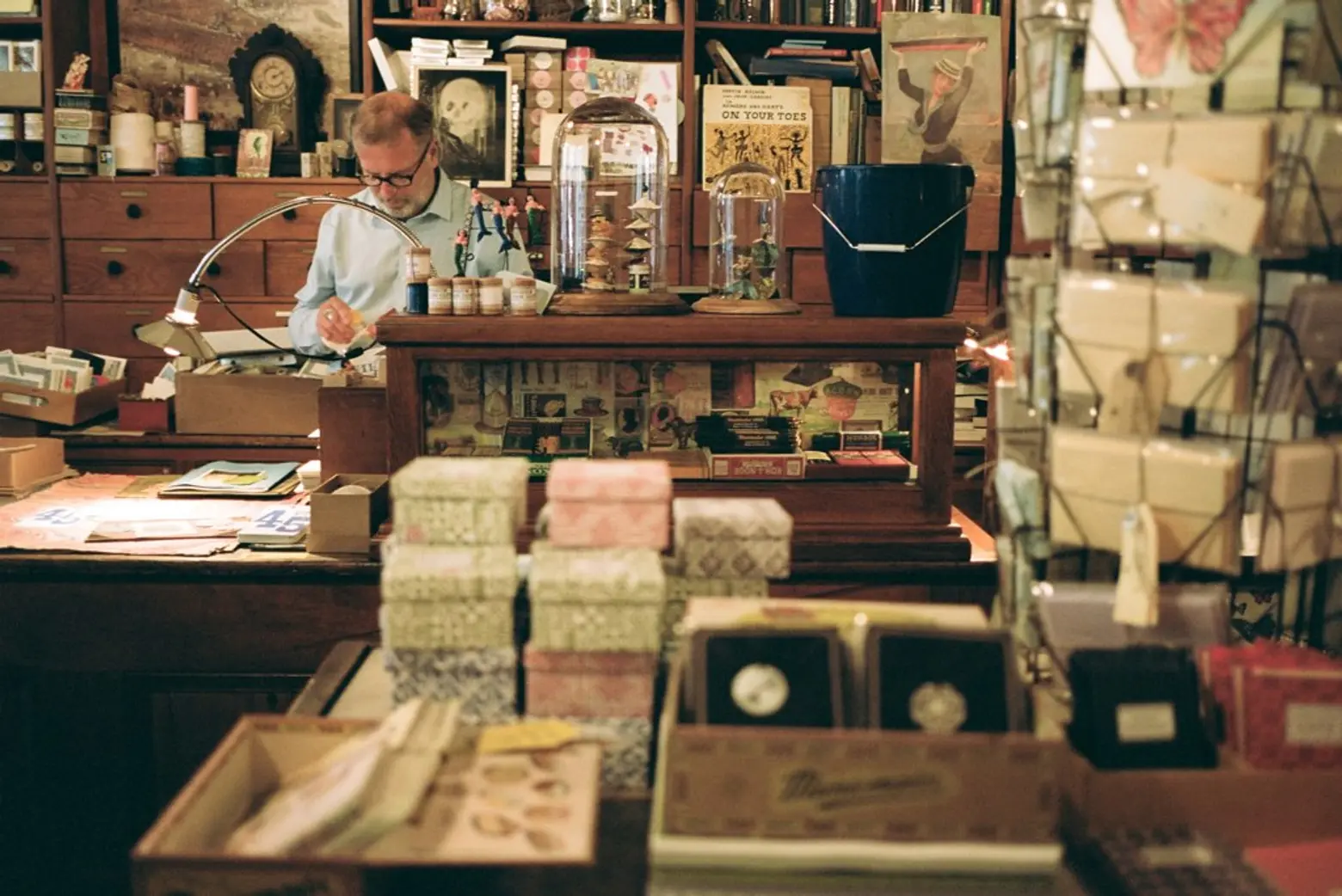 Bowne & Co. Stationers today, via Wiki Commons (top) and inside, via Flickr cc (bottom)
Bowne & Co. Stationers today, via Wiki Commons (top) and inside, via Flickr cc (bottom)
Bowne & Co. itself was a case-in-point of that preeminence, growing throughout the 19th and 20th centuries as a major financial printer. In 1975, Bowne Inc. marked its bicentennial by partnering with the South Street Seaport Museum to open a working 19th-century-style print shop at 211 Water Street. Since then, Bowne and Co. Stationers has been a fully functional specialty press where professional printers ink custom commissions, teach workshops, and offer public demonstrations on working vintage presses from the Museum’s collection. Though Bowne Inc. was subsumed into the rival printing services company RR Donnelly in 2010, its Water Street museum and print shop carry on the company’s mighty maritime legacy. Now, the South Street Seaport Museum is exploring that legacy in “The Printed Port,” a new exhibit celebrating the printing industry’s contribution to New York’s growth.
RELATED:
+++
 Lucie Levine is the founder of Archive on Parade, a local tour and event company that aims to take New York’s fascinating history out of the archives and into the streets. She’s a Native New Yorker, and licensed New York City tour guide, with a passion for the city’s social, political and cultural history. She has collaborated with local partners including the New York Public Library, The 92nd Street Y, The Brooklyn Brainery, The Society for the Advancement of Social Studies and Nerd Nite to offer exciting tours, lectures and community events all over town. Follow her on Twitter and Instagram.
Lucie Levine is the founder of Archive on Parade, a local tour and event company that aims to take New York’s fascinating history out of the archives and into the streets. She’s a Native New Yorker, and licensed New York City tour guide, with a passion for the city’s social, political and cultural history. She has collaborated with local partners including the New York Public Library, The 92nd Street Y, The Brooklyn Brainery, The Society for the Advancement of Social Studies and Nerd Nite to offer exciting tours, lectures and community events all over town. Follow her on Twitter and Instagram.
